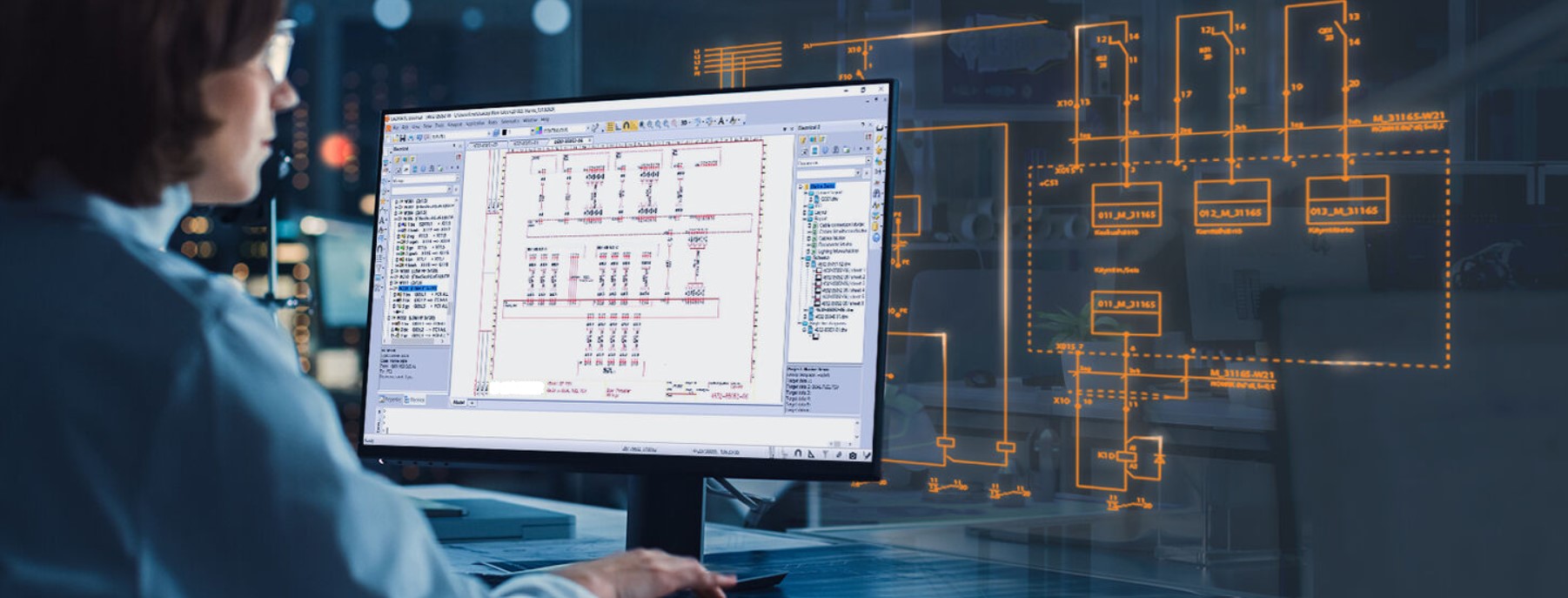Cutting-edge Electric Design Solutions for Modern Infrastructure
The evolution of contemporary framework requires ingenious electrical design services that not only enhance functional performance however additionally address sustainability obstacles. As metropolitan atmospheres grow increasingly intricate, incorporating technologies such as smart grids and renewable resource resources becomes critical. These improvements not only promise to maximize energy consumption yet also foster durability versus future needs. The landscape of electric design is undergoing rapid change, motivating a more detailed assessment of emerging trends and their implications for long-lasting infrastructure viability. What might the future hold for those that embrace these ingenious approaches?
Value of Ingenious Electric Design
Innovative electrical design plays an important function in modern-day facilities, influencing not just effectiveness yet additionally sustainability. As cities progress and the need for energy rises, the requirement for innovative electric systems comes to be vital. These systems must not just satisfy present needs yet likewise anticipate future development and technological innovations.
A well-executed electric design can significantly decrease power usage, thus reducing functional prices and minimizing ecological influence. By incorporating renewable resource sources, such as photovoltaic panels and wind generators, cutting-edge styles can improve energy freedom and resilience. Smart grid technologies allow for real-time monitoring and management of energy distribution, maximizing performance and minimizing waste.
Security is another important facet of electric design. Implementing strenuous requirements and advanced modern technologies can mitigate dangers connected with electrical failures, ensuring a secure setting for locals and companies alike. Furthermore, ingenious designs facilitate adaptability, allowing facilities to integrate arising modern technologies seamlessly.
Trick Trends in Electrical Design
As the landscape of electric design remains to progress, several vital fads are shaping the future of the sector. One substantial fad is the assimilation of smart modern technology into electric systems. The expansion of the Internet of Points (IoT) has actually allowed real-time monitoring and control of electrical gadgets, improving effectiveness and facilitating anticipating maintenance.
Another fad is the expanding focus on modular design. This technique permits adaptable and scalable remedies, enabling infrastructure to adapt to altering requirements without considerable renovations. Additionally, the usage of advanced simulation devices and Building Info Modeling (BIM) is becoming progressively prevalent, simplifying the design process and improving collaboration amongst stakeholders.
In addition, advancements in products scientific research are causing the development of lighter, much more sturdy, and energy-efficient parts. This advancement is particularly vital for high-performance buildings and infrastructure projects.
Finally, there is a marked shift in the direction of data-driven decision-making - electrical engineering design services. Leveraging data analytics helps developers optimize systems for performance and cost-effectiveness. With each other, these patterns signify a transformative period in electrical design, enhancing functionality, sustainability, and resilience in modern framework
Lasting Energy Solutions
Sustainable energy solutions are significantly coming to be a vital emphasis in electrical design, reflecting a wider commitment to ecological duty and source efficiency. These options aim to decrease ecological effect while enhancing energy consumption in various facilities, from household structures to big commercial facilities.
One of the foremost approaches involves the combination of renewable energy resources, such as solar panels and wind turbines, into electric systems. This not only lowers dependency on fossil gas but likewise boosts power durability. Additionally, cutting-edge energy storage space systems, such as advanced batteries, allow efficient monitoring and distribution of energy, making sure that surplus power generated during height production can be made use of during high demand periods.
In addition, energy-efficient design techniques are being adopted to boost general system performance. This consists of making use of energy-efficient illumination, a/c systems, and clever building modern technologies that monitor and adjust power use based upon occupancy and environmental problems.
Smart Grid Technologies
The implementation of lasting power solutions naturally results in the exploration of wise grid innovations, which play a crucial function in modernizing electrical systems. Smart grids leverage advanced communication technologies and data analytics to boost the dependability, efficiency, and sustainability of electricity explanation circulation. By incorporating digital modern technology with standard grid infrastructure, these systems facilitate real-time surveillance, automated control, and improved decision-making abilities.
One of the vital attributes of wise grids is their ability to suit renewable resource resources, such as solar and wind power. This flexibility not just decreases dependency on fossil fuels yet additionally permits for a much more decentralized power production design. In addition, clever grids make it possible for demand reaction programs, where customers can adjust their energy use based on real-time rates, consequently advertising energy preservation and lowering peak tons demands.
Additionally, wise grid modern technologies improve grid durability by making it possible for quicker identification and resolution of failures, eventually minimizing downtime. With anticipating maintenance and analytics, energies can enhance operations and improve service distribution. As cities and areas remain to develop, wise grid technologies are necessary for developing a efficient and lasting electric infrastructure that fulfills the needs of modern-day culture.

Future-Proofing Infrastructure
To make sure long-lasting practicality and versatility, future-proofing infrastructure is important in the quickly progressing landscape of electric design solutions. As innovation developments and power needs shift, it is important that electric systems are developed with flexibility in mind. This involves integrating scalable options that can fit future upgrades without necessitating extensive overhauls.

Additionally, sustainability needs to be a cornerstone of future-proofed designs. Using renewable resource sources, such as solar and wind, and enhancing power performance decrease reliance on nonrenewable fuel sources, aligning with global initiatives to deal with climate change.
Conclusion
Finally, cutting-edge electric design services play a critical duty in shaping modern-day infrastructure. By prioritizing sustainability, effectiveness, and versatility, these services attend to the developing demands of energy systems. The integration of wise grid innovations and sustainable power remedies boosts durability and minimizes operational prices. Future-proofing framework with sophisticated simulation devices and modular methods makes certain that electrical systems continue to be receptive to transforming needs, eventually adding to a more energy-independent and sustainable future.
A well-executed electric design can significantly decrease energy consumption, thereby lowering functional costs and lessening ecological effect. By incorporating renewable energy sources, such as solar panels and wind turbines, innovative designs can improve power independence and resilience. In addition, ingenious power you can try this out storage systems, such as sophisticated batteries, enable efficient monitoring and distribution of energy, guaranteeing that this post surplus energy produced during peak production can be used during high need durations.
Wise grids make it possible for need action programs, where customers can adjust their energy use based on real-time prices, therefore promoting power preservation and minimizing peak tons demands. (electrical load calculation)
As technology advancements and power needs change, it is important that electrical systems are designed with adaptability in mind.